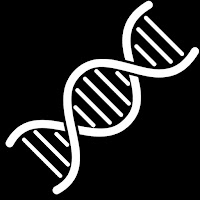All of us know about the transportation vehicles made up of metallic and carbon fiber components but have you ever heard about a bioinspired transportation vehicle made up of proteins and sugar? According to a study published in the journal Advanced Science, researchers at the University of Münster have recently developed a new type of transporting container that is constructed entirely from biological components. They named it as a nanocontainer. These can function as a shipping container transporting cargo from one place to another place. Previously it was developed from lipids but now it is made up of sugars and protein structures known as polypeptides. It is about 150 nanometers in diameter i.e. you can't see it by your naked eyes.
Benifits of Nanocontainer:
These Nanocontainers can be used to transport any molecular substance into our cells. Nanocontainers can transport substances into cells where they can then take effect. This is the method used in, for example, the mRNA vaccines currently being employed against Covid-19 as well as certain cancer drugs. In the future, well developed Nanocontainers built from sugar and protein components might also be suitable for applications in living organisms to deliver drugs specifically into certain tissues and cells. Nanotransporters can also be used to deliver labelled substances into cells in order to study basic cellular functions.
How researches developed Nanocontainers?
Scientists used sugar compounds known as modified cyclodextrins, that are similar in structure and behaviour to certain lipids that are naturally present in every cell. They formed a shell around it like the protective cell membrane lipids, the sugar structures arrange themselves l. It forms a shell in which they enclose the substances to be transported. However, because the resulting container is still leaky. It can lose its cargo over time. To solve this problem, the scientists added protein structures known as polypeptides. These polypeptides form a sealing layer around the container.
"To test how thick the sealing layer needed to be, we varied the length of the peptide sequences and tailored them so that the containers stably encapsulated their cargo," explains Sharafudheen Pottanam Chali, a chemistry doctoral student and one of the study's two lead authors.
How nanocontainers get entry into cells?
The hypothesis was that this happens via so-called endocytosis. During this process, the cells internalize a part of their cell membrane and pinch it off. It creats small vesicles called endosomes in which extracellular material is transported into the cell.
To test this, the scientists used a sugar compound called dextran that is to be taken up by endocytosis. They treated their cell cultures with red fluorescent dextran. At the same time, they added nanocontainers filled with a green fluorescent cargo known as pyranine.
"In the fluorescence microscope, it became visible that both substances were taken up into the cells equally and their fluorescence overlapped visibly therefore we could conclude that the nanocontainers, just like the dextran, were efficiently taken up by the cells through the endosomal transport process," explains Sergej Kudruk, a biochemistry doctoral student and also a lead author of the study.
How nanocontainers undock cargo to their destination?
Scientists were already considering a condition during development of Nanocontainers that the environment inside the endosomes will differ from those of the cellular environment. They constructed the containers in such a way that the altered environment in the endosomes will destabilizes and partially degrades the polypeptide shell of the nanocontainers and thus they become leaky and release their cargo into the inside of the cell.
"When the containers are taken up into endosomes, two types of enzymes, which we knew to be present in endosomes and which can contribute to the degradation of the shell at specific sites, come into play," explains Sergej Kudruk. "So-called reductases degrade the disulfide bridges that were previously established to crosslink the peptide molecules of our nanocontainers in addition, peptidases cleave the peptide molecules themselves," adds Sharafudheen Pottanam Chali.
Scientists also tested the degradability of the container shell outside the cell. To do so, they loaded the containers with a fluorescent dye and simulated part of the complex endosomal microenvironment by using the enzyme trypsin as well as reducing agents. After treatment, the dye leaked out immediately.
In future these biologically Nanocontainers might be used as transport drug molecules to cancer cells and those tissues where they can't reach by normal methods.
Story Source:
Materials provided by University of Münster. Note: Content may be edited for style and length.
Journal Reference
Sergej Kudruk, Sharafudheen Pottanam Chali, Anna Livia Linard Matos, Cole Bourque, Clara Dunker, Christos Gatsogiannis, Bart Jan Ravoo, Volker Gerke. Biodegradable and Dual‐Responsive Polypeptide‐Shelled Cyclodextrin‐Containers for Intracellular Delivery of Membrane‐Impermeable Cargo. Advanced Science, 2021; 2100694 DOI: 10.1002/advs.202100694




